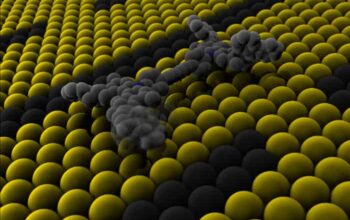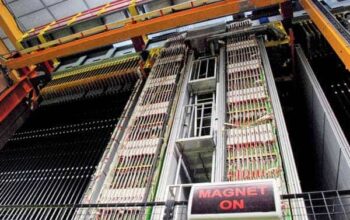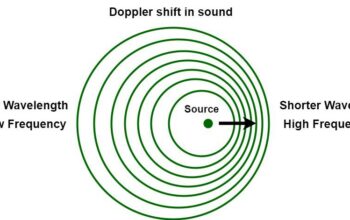The pervasive demand for computational power has led to unprecedented advancements in technology. However, this relentless pursuit often exacerbates energy consumption and environmental repercussions. In this landscape, the advent of innovative semiconductor technologies heralds a transformative era: Cool Chips Hot Savings. The fusion of energy efficiency with high computational capability promises to significantly mitigate the ecological footprint of future computing systems. This discourse elucidates the multifaceted approaches within this domain, examining how emergent technologies promise to enhance energy efficiency in computing.
First and foremost, the cornerstone of energy efficiency in computing lies in the evolution of semiconductor materials. Traditionally, silicon served as the predominant substrate for chips. However, researchers are now exploring novel materials such as gallium nitride (GaN) and silicon carbide (SiC). These alternatives exhibit superior thermal conductivity and breakdown voltage compared to silicon. This characteristic enables the construction of power transistors that operate at higher temperatures, ultimately leading to reduced cooling requirements. Consequently, devices fabricated from these materials consume less power, thereby achieving significant energy conservation.
In tandem with material innovation, architectural advancements play a vital role in curtailing energy usage. The introduction of heterogeneous computing—where various processing units are utilized for specific tasks—exemplified by the incorporation of Graphics Processing Units (GPUs) alongside traditional Central Processing Units (CPUs) represents a paradigm shift. GPUs, designed for parallel processing, can handle numerous calculations simultaneously, rendering them particularly efficient for data-intensive applications such as machine learning and artificial intelligence. This bifurcation of workloads not only enhances processing speeds but also conserves energy by minimizing the need for prolonged CPU activity.
Moreover, the impending rollout of quantum computing stands poised to revolutionize the energy dynamics of computation. Quantum bits, or qubits, enable the execution of complex calculations through principles of superposition and entanglement, which allow for computations that would be prohibitively energy-intensive on classical systems. Although still in its nascent stages, the potential for quantum computers to solve problems more efficiently positions them as a formidable solution to energy-hungry computational tasks.
Simultaneously, the proliferation of energy-efficient design principles has harnessed the power of software optimization. Modern operating systems and applications increasingly incorporate algorithms that dynamically manage power consumption based on workload requirements. Techniques such as dynamic voltage and frequency scaling (DVFS) enable processors to adjust their operational parameters in real-time, aligning with computational needs while conserving energy during periods of lower demand. These intelligent systems can yield considerable power savings without compromising performance.
An equally significant facet of energy efficiency derives from the embrace of edge computing architectures. By decentralizing processing capabilities and moving data processing closer to its source, edge computing minimizes the distance data must travel, thereby reducing latency and energy expenditures associated with data transmission. In scenarios involving the Internet of Things (IoT), edge devices can perform analytics locally, which alleviates the energy burden on centralized cloud infrastructures. This distributed model augments operational efficiency while enhancing responsiveness.
Furthermore, the advent of carbon-aware computing has emerged as a compelling strategy for sustainable energy use. By taking into account the carbon intensity of the energy being consumed, these systems can optimize workloads to execute during periods when renewable energy sources—such as wind or solar—are most abundant. This conscientious approach not only facilitates greener operations but also aligns with an ethical imperative to leverage cleaner energy solutions for high-demand processes.
In the pursuit of these advancements, significant attention must also be directed toward innovative cooling solutions. Conventional cooling methods, reliant on air conditioning and refrigeration, contribute enormously to energy consumption. In contrast, advancements in liquid cooling and phase-change cooling technologies present pathways to more efficient thermal management of hardware. Liquid cooling, which employs water or other coolants to absorb heat more effectively than air, can significantly reduce energy expenditures associated with thermal regulation, resulting in cooler, quieter, and more energy-efficient systems.
Equally notable is the trend towards virtualization and cloud computing, which optimizes resource usage across multiple workloads. Virtualization enables a single physical server to support several virtual machines, allowing organizations to maximize the utilization of their resources while minimizing idle hardware. By consolidating computing resources into cloud infrastructures leveraging energy-efficient data centers, corporations can achieve enhanced scalability while simultaneously reducing their overall energy consumption and operational costs.
Finally, the significance of energy-efficient computing cannot be overstated as industries increasingly adopt sustainability benchmarks. Analysts predict that as energy costs rise and climate change concerns escalate, firms will be compelled to transition to greener technologies. This shift is likely to reverberate across the procurement chain, with stakeholders prioritizing environmental impacts among their purchasing criteria. Companies that embrace energy-efficient technologies will not only enhance their competitive edge but also foster a more sustainable future.
In conclusion, the trajectory toward Cool Chips and Hot Savings signifies a pivotal juncture in the evolution of computational efficiency. The synthesis of advanced materials, innovative architectural paradigms, and intelligent power management establishes a robust framework for achieving significant energy savings. As the computing landscape evolves, the intersection of technology and sustainability will shape an era of conscientious innovation, wherein the benefits of enhanced performance are harmonized with the imperatives of environmental stewardship. This landscape of future computing promises to yield profound advancements, ensuring that progress does not come at the cost of our planet’s well-being.










